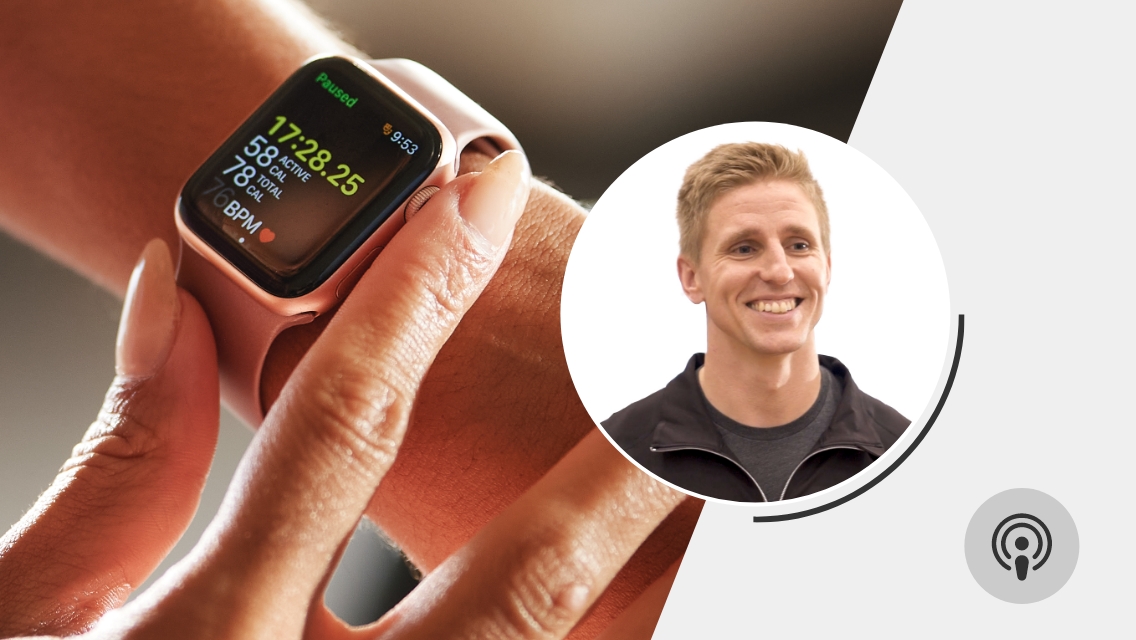Heart-rate monitors can offer so much to help with your fitness endeavors – if you know how to use them.
If you want to lose weight, a monitor can help you spend your time working out within the heart-rate zone that’s ideal for peak fat burning. If you’re training, a monitor can help you exercise within the appropriate heart-rate zone for each specific workout, from endurance-building long runs to speed-boosting intervals. Tracking your heart rate at various effort levels, from low to maximum, over time provides feedback on your progress and helps adjust your workout program so you can continue to improve.
“Monitoring your heart rate is, without question, the best feedback you can get relative to your state of fitness and your state of wellness at any given moment,” says Richard Diaz, of Diaz Human Performance (www.diazhuman performance.com), a Camarillo, Calif.–based company that provides custom-designed exercise and nutrition programs for weight loss, general fitness and athletic performance.
The trouble is, too many people buy a heart-rate monitor because they want to exercise smarter, but then wind up not understanding how to use them and what the numbers mean.
Don’t let this happen to you. With just a little guidance, you can tap into your monitor’s full potential and get closer to reaching your own.
Reading List
Your first step to becoming a smarter monitor owner: Read the directions, friend.
Obvious as that might sound, “you’d be surprised how many people purchase a monitor and then ignore the manual,” says Sally Edwards, founder and CEO of Heart Zones (www.heartzones.com), a Sacramento, Calif.–based network of coaches and personal trainers providing heart-rate-based workout programs. “Spend an hour reading the manual. It’s not very long or complicated, and it’s worth every minute,” she advises. It’s the quickest way to understand the basics of your monitor and to ensure that you don’t miss out on helpful features you’ve already paid for.
The Sum of Its Parts
Most monitors have two basic parts: a transmitter contained within a strap worn around the chest, and a display unit, generally worn as a watch on the wrist. The transmitter reads your heart rate and feeds the information to the display unit, which gives you a readout in real time. (Some new monitors on the market combine the transmitter and display within the wrist unit. But there’s some controversy regarding whether these models are as accurate as traditional heart-rate monitors with a chest strap.)
Assuming you have a two-part monitor system, the display unit is where most of the buttons, modes and gizmos will be found. The simplest monitor-display units have just one button to start and stop the reading function. Many models also incorporate a stopwatch, which is useful when you want to divide a workout into segments or to know how long it takes you to cover a measured distance. The most advanced units have four or five buttons that operate a dozen or more features (more on that below).
Before using your monitor during a workout, you should be reasonably familiar with what each of the buttons does. If you’re fortunate enough to know someone who owns the same monitor, ask for a button tutorial, Edwards advises. Have the salesperson who sold you the monitor show you the fundamentals before you leave the store, or ask a trainer at your club for pointers. At minimum, you’ll need to know how to toggle between the modes or views you find interesting and how to use any critical start/stop workout-timing functions.
Slip on the Strap
To ensure an accurate reading, moisten the sensor pads on the chest strap before putting them against your skin. Water will do (or, gross as it may sound, a little saliva), but you can also buy special gels, such as Lectron II, that work even better because they are specially formulated to conduct electrical currents, and they’re more viscous, so they stay between the sensor and your skin. These products are available from many heart-rate-monitor retailers. If you’ve ever worn a monitor and been unable to get a heart-rate reading to come up on the display, it was probably because you didn’t properly wet the sensor. This is a common oversight that stalls many monitor users right at the starting line.
Adjust the chest strap around the ribs so it fits snugly, yet comfortably: for women, just underneath your breasts, and for men, right underneath your pectoral muscles. Center the sensor over your sternum.
Many first-time users find that the chest strap feels constraining or uncomfortable. This is normal; you’ll probably be used to wearing the strap by the third or fourth use. It’s not unlike getting accustomed to wearing glasses, braces or anything else not quite natural on the body. If you find the chest strap just too unbearable, try another model or manufacturer. Some offer transmitters with fabric chest straps, which you may find more comfortable than the common plastic ones.
Start Monitoring
Once you know how to wear your monitor and understand the button functions, you’re ready to take it out for a spin. The first few times out, Edwards advises just doing your regular workout and glancing at the display every few minutes without worrying about a target heart rate or training zone. “Just get used to working out with the monitor on and seeing how your readings change with your exertion level,” she suggests.
Program Your Zones
After an “experimental” workout or two, you should be ready to transform your monitor from a toy into a tool. “The most important thing you can do is determine the appropriate intensities for specific workouts,” Edwards says. Each workout should focus on one or more specific heart-rate zones: lower zones for warming up and cooling down, and progressively higher zones for aerobic workouts, maximum fat burning, athletic performance and so forth. (For more details, see “The A.T. Factor,” in the May 2005 Experience Life at lifetime fitness.com/magazine.)
Some units let you monitor just one zone at a time (say, your aerobic zone) while others let you target and monitor up to five zones. In addition, some monitors use automatically programmed zones, while some allow you to program them manually. Others give you the option of choosing between the two.
With automatically programmed zones, the monitor sets your target-heart-rate training zones for you, based on your age and other variables. Manual programming requires that you enter your own zone data as determined by a formula or (preferably) a fitness test. (One example, the easy-moderate-hard test, is described in the article “Missing Your Max?” in our January/ February 2005 issue, available at lifetimefitness.com/magazine.)
Manufacturer’s preset zones and manual-programming methods vary. If you have strong feelings about heart-rate-training methods, be certain that your monitor allows you to override any preset zones you don’t like.
Commit Your Results to Memory
Most monitors have a memory feature that allows you to store information from several workouts (workout duration, average heart rate, time in target zone, calories burned, etc.) for later review. The most basic monitors store just one workout, so if you want to record your results in an exercise log, you must do so before your next workout clears the old data. Some of the more expensive monitors allow you to store literally hundreds of workouts and download them to your personal computer. “The advantage of downloading is that you have a permanent record of your workout, and you can compare it against the same workout a month later to see whether you’re getting more fit,” Edwards says. “When you can see verifiable improvements over time, that keeps you motivated.”
Dig the Data
The one critical function that all monitors share is real-time display of your current heart rate. Some models provide this readout as soon as you put on the chest strap, while with others (namely those with a stopwatch or chronograph function) you have to select the “monitor” or “chrono” mode. For models with a stopwatch feature, you must start the stopwatch (or timer) to officially begin a workout, and then again to end it. This is also the only way to get a complete, recallable summary of your workout information after your session is completed.
Once you’ve begun timing your workout, you can then simultaneously observe elapsed time and heart-rate information. Cycle through your other modes and views to see additional info. For runners, the monitors that offer the most workout information are those integrated with speed and distance devices. For cyclists, there are a variety of “bike computers” that observe and report not only your heart rate and workout time, but also your speed, power output, pedaling cadence, average speed and other data – not all at once, but by flipping modes as you continue pedaling.
It really doesn’t have to be that complicated, though. In most cases, you can get plenty of information just by checking your heart rate every few minutes throughout your workout and adjusting the intensity of your activity upward or downward, based on the training zone you’re focusing on at that time.
Sound the Alarm
Some monitors have a feature known as an “out-of-zone alarm,” which alerts you when your heart rate climbs above or sinks below your target zone. This spares you the trouble of periodically checking the display. Instead, you can focus on your workout, knowing you’ll be alerted if an adjustment is called for. One note: For interval sessions or other workouts that involve variable intensity, you’ll want to deactivate the out-of-zone alarm. Otherwise, the noise will drive you bonkers.
Note the Details
Your monitor may offer all sorts of sweet features that come in handy but that aren’t strictly necessary. For instance, many monitors come with a backlight, which is great for those late-evening runs or a poorly lit cycling class. Some models also come with a “personal trainer” feature that creates and guides you through complete training programs based on your goals. Some let you see a bar graph of your exertion levels as you exercise. Others offer sporty or ergonomic styling. (To learn more about these and other advanced monitor functions, check out The Heart Rate Monitor Book for Cyclists by Sally Edwards and Sally Reed.)
How important these features are to you depends mostly on how you intend to use or wear them, how tech-savvy or tech-averse you are, and other personal preferences. But whether you go for a basic, one-button beauty, or a tricked-out, hyper-advanced “electronic training partner,” the important thing is that you know how to interpret the feedback you’re getting – without getting bogged down in distracting details.
There’s no point in getting the iPod of monitors if you only need “12-song” reporting. So go for a monitor with the features you need. Spend a little time on the front end figuring them out. Then work your monitor for everything it’s got.
A Few Good Units
Maybe you’ve thought about getting a heart-rate monitor but don’t know where to begin. While there are dozens of models on the market, your monitor should match your fitness goals and budget. Some of our favorites:
Less Than $100
Timex 5C411 – Features five target heart zones based on max heart rate, recovery-rate timer and 30-lap memory. Ideal whether your goal is to lose weight or train for a 10K. $89; www.timex.com
$100 to $200
Polar F6 – The optimal choice for indoor cyclists and group exercisers. Tracks calories and percentage of fat burned, and lets you set your own target-heart-rate zones. Also includes crosstalk prevention to block out interference from other monitors. $110; www.polarusa.com
More Than $200
Garmin Forerunner 301 – Good for cyclists, runners and hikers. Comes with real-time speed and distance measurement using GPS technology as well as 5,000-lap memory for individual workouts or entire training plans. $325; www.garmin.com
This article originally appeared as “Master Your Monitor” in the October 2004 issue of Experience Life.


This Post Has 0 Comments